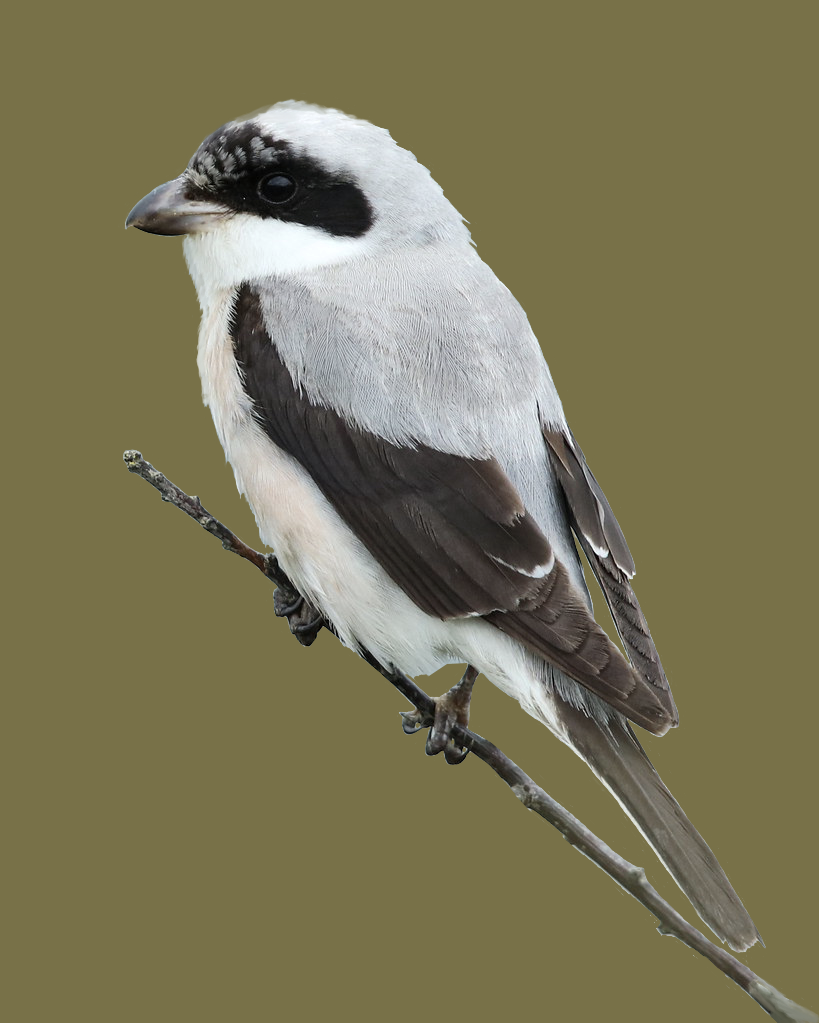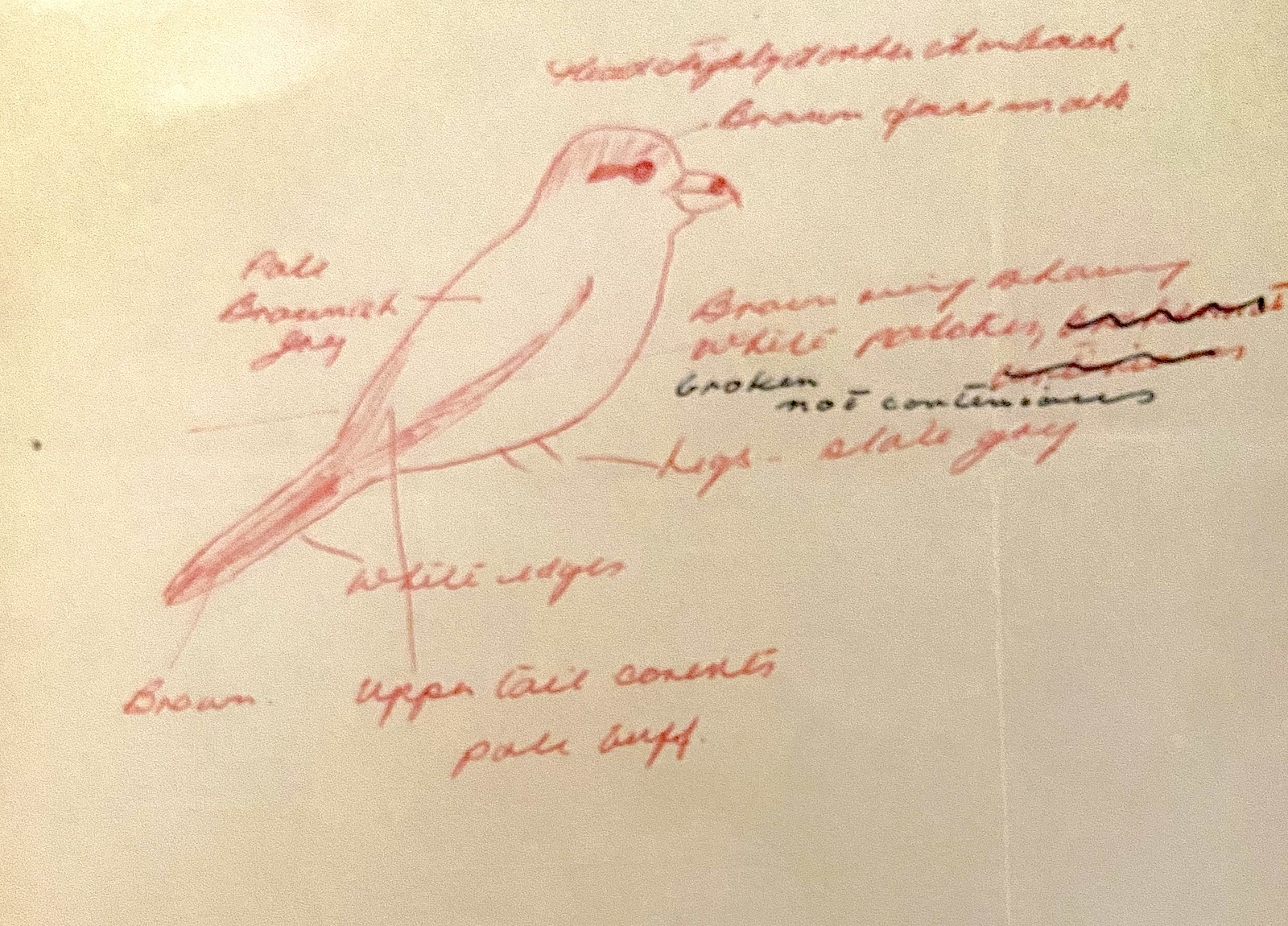Lesser Grey Shrike Lanius minor

Computer-generated image courtesy of Colin R Casey.
The first county record occurred at Gibraltar Point where a 1CY female was found on the reserve on October 11th and seen by just a single observer. This species remains an extreme rarity in the County with just a further 3 records (a poor showing compared to neighbouring counties of Yorkshire and Norfolk). The remaining records are a bird witnessed by several observers at Saltfleetby on October 5th 1969, another at Donna Nook on May 25th-26th 1970 and a superb adult male that fed along the sea bank at Kirton Marsh on May 12th 1990.
In Britain, Lesser Grey Shrikes occur mainly in late spring and summer with smaller numbers in autumn. Its temporal and geographical occurrence patterns are similar to those of European Roller, a species that has a similar distribution. Both species have shown a worrying decline over much of their European range. This has been occurring since the mid-nineteenth century and has been linked to climatic change; particularly lower summer temperatures and heavy rainfall. In Germany, for example, Lesser Grey Shrikes last bred in 1987, having declined from 1,000 pairs in 1950. Much more recently, Lesser Grey Shrikes failed to breed in France in 2019 for the first time in recorded history. The drastic decline in French numbers, which have been closely monitored for more than 25 years, goes beyond France's borders and is linked to a combination of factors, in addition to current agricultural practices, certain climatic factors and poaching on its long Mediterranean migration routes (6,200 miles) and the degradation of wintering habitats. Unusually, a colour-ringed bird turned up at Long Nanny, Northumberland in September 2016 and was discovered to have come from a Spanish recovery project; this bird was captive-bred and released in August 2016 turning up on the Northumberland coast in mid-September 2016. Despite the declines in its breeding range, it remains an almost annual visitor to Britain although it is much less frequent averaging about 2-3 birds per year.
| Site | First date | Last date | Count | Notes |
| Gibraltar Point NNR | 11/10/1960 | 1 | 1CY bird. | |
| Saltfleetby-Theddlethorpe NNR | 05/10/1969 | 1 | ||
| Donna Nook | 25/05/1970 | 26/05/1970 | 1 | |
| Kirton Marsh | 12/05/1990 | 1 | Adult male. |
Finder’s report: Lesser Grey Shrike at Gibraltar Point NNR, October 11th, 1960, first county record.
by N. J.P. Wadley
Note: this brief account is taken from the original Rarities Committee correspondence; the letter is quite faded and in one or two places I have had to interpret words as best I could! The submission has been annotated with a few queries, presumably from either the LNU secretary or the RC secretary, but the record was accepted and published in the RC report for 1960. There were three records in all in 1960, one of which was also in October. This brought the British total to 20 records since 1950-60, less than two per year.
Circumstances
At 10.30 hr., October 11th,1960, a bird was seen sitting on the high post of the third trap. At 150 yd. in good light with the sun behind, it was clearly a shrike, but strikingly pale and even coloured. When seen from about 40 yd. it had moved to the stay-wire. It was watched for 20 minutes down to 10 yd.
Description
General appearance and size - When first seen it looked rather larger than a Red-backed Shrike but appreciably smaller than a Great Grey. When perched the body seemed notably heavier than that of the Red-backed Shrike, though the tail seemed short in proportion for a shrike. Further observations showed that this was due to the long wings which gave the tail at rest a shorter appearance. As soon as the bird flew the tail looked normal, shrike proportion but wings noticeably long.
Upperparts – pale brownish -grey, slightly darker on head, and uppertail coverts pale buff. No streaking or barring seen and brown face markings from eye backwards, only none on forehead. No sign of superciliary stripe but pale cream under eye.
Wings – brown showing broken white patches at rest on lower wing. Chest pale creamy white, no sign of markings, apparently greyer underwing (? effect of shadow).
Tail – brown undertail feathers, with whitish outer margins.
Bare parts – bill pale horn, upper mandible slate grey (illegible); legs slate grey; iris very dark brown or black. Gape pinkish-red.
Flight – strong and direct; when feeding the bird swept to the ground, flew a yard or two, pounced, and was back at the same perch with similar low flight, sweeping again up to perch. When flushed always swept down, wing pattern and tail only glimpsed on each occasion. Impression of long wings for size, brown with broad white patch at middle of leading edge. Tail graduated. Easily approached, when perched tail held less pendant than are associated with shrikes.

Sketch of the Lesser Grey Shrike at Gibraltar Point, October 1960, from the original letter to the RC.
Reference
Touzé, H (2019). Lesser Grey Shrike lost as breeding species in France. Bird Guides article at https://www.birdguides.com/articles/lesser-grey-shrike-lost-as-breeding-species-in-france
(Account prepared September 2019; includes all records to 2018)

